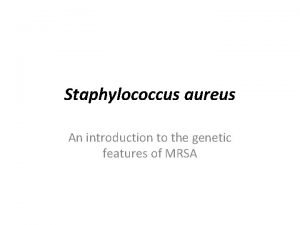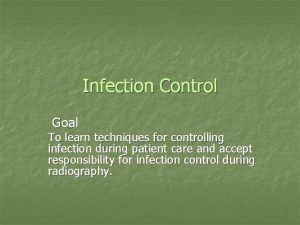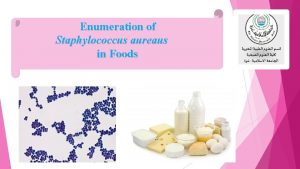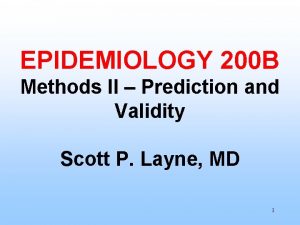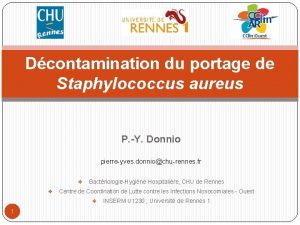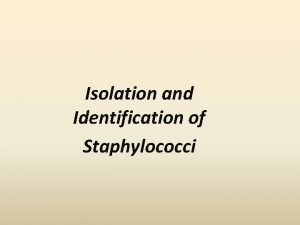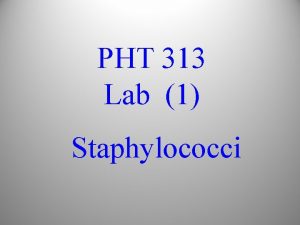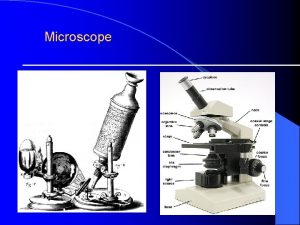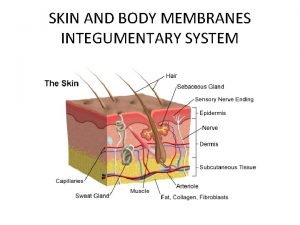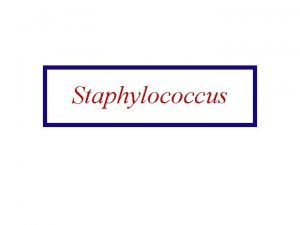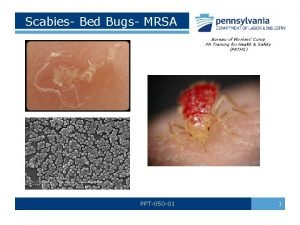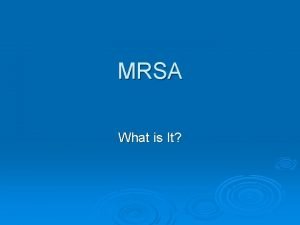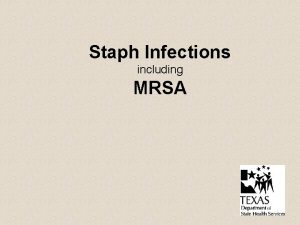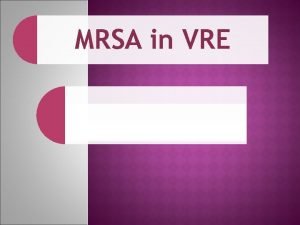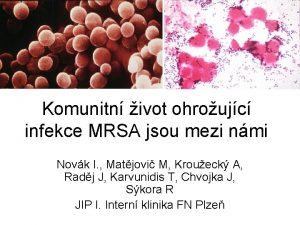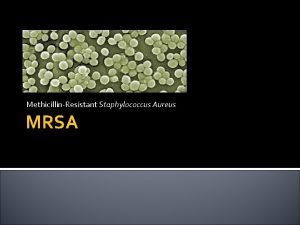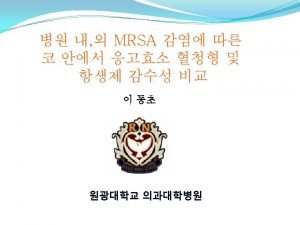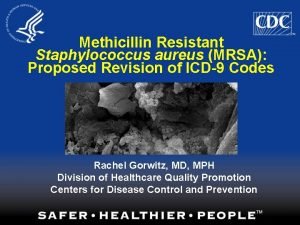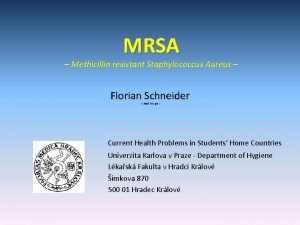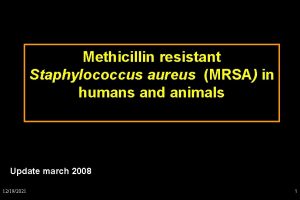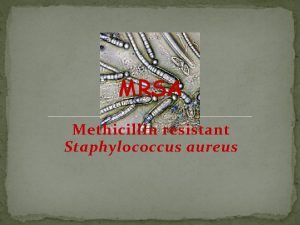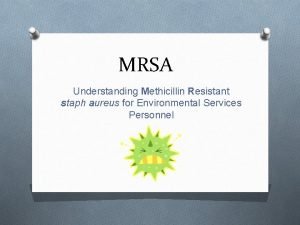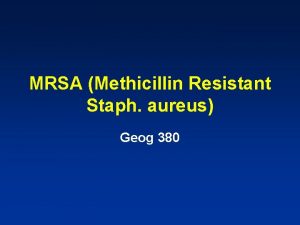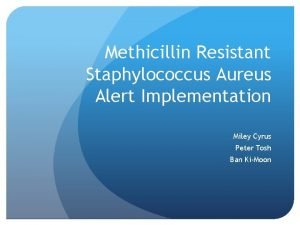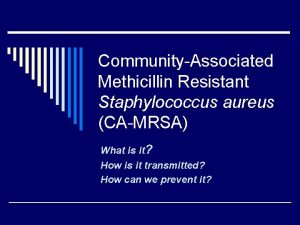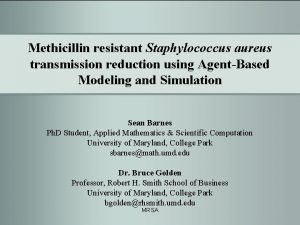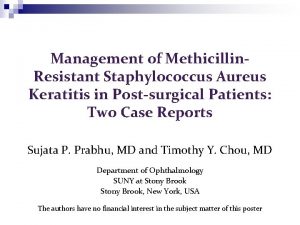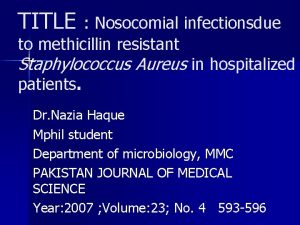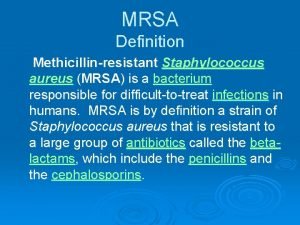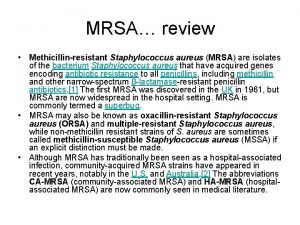1 Diagnosis of Methicillin Resistant Staphylococcus aureus MRSA





































- Slides: 37

1

Diagnosis of Methicillin Resistant Staphylococcus aureus (MRSA) & Methicillin Susceptible Staphylococcus aureus (MSSA) 2

3

Staphylococcus aureus: The Superbug 4

5

Introduction n Staphylococcus aureus has been reported as a major cause of community and hospital acquired infection. 6

Continue… n Methicillin-resistant S. aureus (MRSA) were first reported in 1961 in UK and have since become a major nosocomial pathogen worldwide. n Treatment of infection caused by MRSA has become problematic. 7

Continue… n Indiscriminate use of multiple antibiotics especially in developing countries, prolonged hospital stay. intravenous drug abuse , carriage of MRSA in nose are few implicated risks factors for MRSA actuation. 8

Evolution of Antimicrobial Resistance S. aureus Penicillin Methicillin Penicillin-resistant Methicillin-resistant (1950 s) S. aureus (1960 s) S. aureus (MRSA) Vancomycin (1997) Vancomycin. Resistant S. aureus (2002) Vancomycin intermediate resistant S. aureus 9

A brief history of vancomycin resistance 10

Epidemiology of MRSA n Overall 20% of S. aureus in Europe are MRSA n In USA hospitals the prevalence of MRSA ranges from 33% to 55% 11

Epidemiology of MRSA n In Asian countries : n In Taiwan prevalence of MRSA increased 26% in 1986 to 77% in 2001 n In Korrean hospitals the prevalence of MRSA was 64% between 1999 -2000 12

Epidemiology of MRSA Stefania 2012 IJAA 13

fa ha n Ku 20 rd 12 es ta n 20 Te 13 hr an 20 Sh 13 ira z 20 Ar 13 da bi l 2 01 Sh 4 ira z 20 Ta 15 br iz 20 Te 16 hr an 20 Ta 16 br iz 20 17 Is The prevalence of MRSA from different studies in Iran MRSA 100 90 80 70 60 50 40 30 20 10 0 14

MRSA n MRSAs are those strains of S. aureus that express mec. A n Another mechanism of methicillin resistance, such as changes in affinity of penicillin-binding proteins for oxacillin 15

16

17

18

Hospital Acquired-MRSA (HA-MRSA) n Community Acquired-MRSA (CA-MRSA) n HA-MRSA CA-MRSA SCCmec Types I to III Types IV and V pvl rare common Antimicrobial resistance Resistant to multiple agents Resistant mainly to beta lactams History Hospitalization, invasive medical devices, surgery Community Infections Acute deep infections Skin and soft tissue infections 19

Methicillin (oxacillin ) susceptibility testing n Microbiology laboratories have an important role in detection of MRSA. There are two major methods for detection of MRSA in laboratory. Phenotypic Methods n Genotypic Methods. n 20

Phenotypic Methods for detection of MRSA Disk diffusion Methods ( Oxacillin and Cefoxitin) Ø Dilution methods ( for MIC) Ø E-test method Ø Agar screening method Ø Latex agglutination method Ø MRSA Choromoagar Ø Automated methods. Ø 21

Genotypic Methods n Accurate routine phenotypic detection of MRSA is difficult by using standard phenotypic methods. This has been ascribed to the heterogeneous expression of Methicillin resistance in many strains of S. aureus. n For this reason detection of mec. A or PBP 2 a by molecular method is very important. Using of PCR for detection of 22

Why are oxacillin and cefoxitin tested instead of methicillin n Cefoxitin is an even better indicator of the mec. A gene, and disk diffusion tests n Using cefoxitin gives clearer end points and are easier to read than tests with oxacillin 23

Oxacillin based methods MICs Methods : ü Microdilusion or E-test ü Oxacillin Screen Agar n v Oxacillin disk Diffusion (Cefoxitin) 24

Continue. . n The addition of Na. Cl ( 4%) is required for both agar and broth dilution testing of oxacillin to improve the detection heterogeneous MRSA. n For disk diffusion testing MHA should not be supplemented 25

Cefoxitin –Based Methods n The results of tests using (either broth microdilution diffusion tests using a 30µg disk). Cefoxitin or disk Cefoxitin 26

Cefoxitin n For coagulase-negative staphylococci currently only the cefoxitin disk diffusion test has been validated for predication of mec. A –mediated resistance. n For disk diffusion testing of S. lugdunensis, only cefoxitin disk should be used. 27

Vancomycin resistance in S. aureus VISA (vancomycin intermediate S. aureus) Ø First case 1996 (VISA) Ø MIC 4 -8µg/ml Ø Thick cell wall (reduces vanco penetration through cell wall). Ø Accumulates multiple mutations that activate pathways for cell wall synthesis & change cell physiology 28

Testing Recommendations n VRSA isolates are detected by : Ø Broth microdilution E-test Agar dilution Vancomycin screen agar plates [Brain Heart Infusion (BHI) agar containing 6 µg/ml of vancomycin]. Ø Ø Ø Disk diffusion is not recommended for testing vancomycin susceptibility in S. aureus 29

Screening of VRSA n Vancomycin Agar Screen Plates Ø The vancomycin agar screen test uses commercially prepared plates containing brain heart infusion (BHI) agar and 6 μg/ml of vancomycin to screen pure cultures of bacteria for vancomycin resistance. 30

31

References VISA VRSA Method 1 -Azimian et al Mashhad 2012 -- 1 case MIC (E-test) 2 -Sarrafzadeh et al Kerman (2016) -- 23 cases (9. 2%) MIC (E-test) 3 Najar. Peerayeh et al Tehran 2016 10 cases (17. 4%) -- Agar screen plates Shiraz (Jahrom) 37 cases (37%) -- Agar screen plates Isfahan 20142016 (unpublished) 14 cases -- Agar screen plates 4 -Saadat et al Havaei et al 1 - Journal of Clinical Microbiology November 2012 Volume 50 Number 11 (ISI) 2 - Cogent Medicine (2016), 3: 1163768 (Pubmed) 3 -Asian Pac J Trop Dis 2016; 6(9): 726 -731 (Pubmed) 4 -Oman Medical Journal (2014) Vol. 29, No. 5: 335 -339 (Pubmed) 32

33




 Enzymes of staphylococcus aureus
Enzymes of staphylococcus aureus Fastidious organisms
Fastidious organisms Prokaryotic cells
Prokaryotic cells Staphylococcus aureus cocci or bacilli
Staphylococcus aureus cocci or bacilli Microbiology
Microbiology Confirmation test for staphylococcus aureus
Confirmation test for staphylococcus aureus Nummular eczema
Nummular eczema Staphylococcus aureus vs streptococcus pyogenes
Staphylococcus aureus vs streptococcus pyogenes Staphylococcus aureus?
Staphylococcus aureus? Staphylococcus
Staphylococcus Staphylococcus aureus
Staphylococcus aureus Etiolgia
Etiolgia Staphylococcus aureus kingdom
Staphylococcus aureus kingdom Portage staphylococcus aureus
Portage staphylococcus aureus Enzymes of staphylococcus aureus
Enzymes of staphylococcus aureus Conjugation reproduction
Conjugation reproduction Catalase
Catalase Medical diagnosis and nursing diagnosis difference
Medical diagnosis and nursing diagnosis difference Dependent intervention nursing
Dependent intervention nursing Perbedaan diagnosis gizi dan diagnosis medis
Perbedaan diagnosis gizi dan diagnosis medis Medical diagnosis and nursing diagnosis difference
Medical diagnosis and nursing diagnosis difference Types of nursing diagnosis
Types of nursing diagnosis Staph aureus on blood agar
Staph aureus on blood agar Emb agar gram positive bacteria
Emb agar gram positive bacteria Streptococcus aureus
Streptococcus aureus S. epidermis
S. epidermis Streptococcus aureus
Streptococcus aureus Scabies description
Scabies description Mrsa
Mrsa Mrsa
Mrsa Nozin mrsa
Nozin mrsa Mrsa
Mrsa Vre
Vre Mru collective agreement
Mru collective agreement Dr kim new england baptist
Dr kim new england baptist Mrsa infekce
Mrsa infekce Mrsa näyte fimlab
Mrsa näyte fimlab Mrsa wound
Mrsa wound
